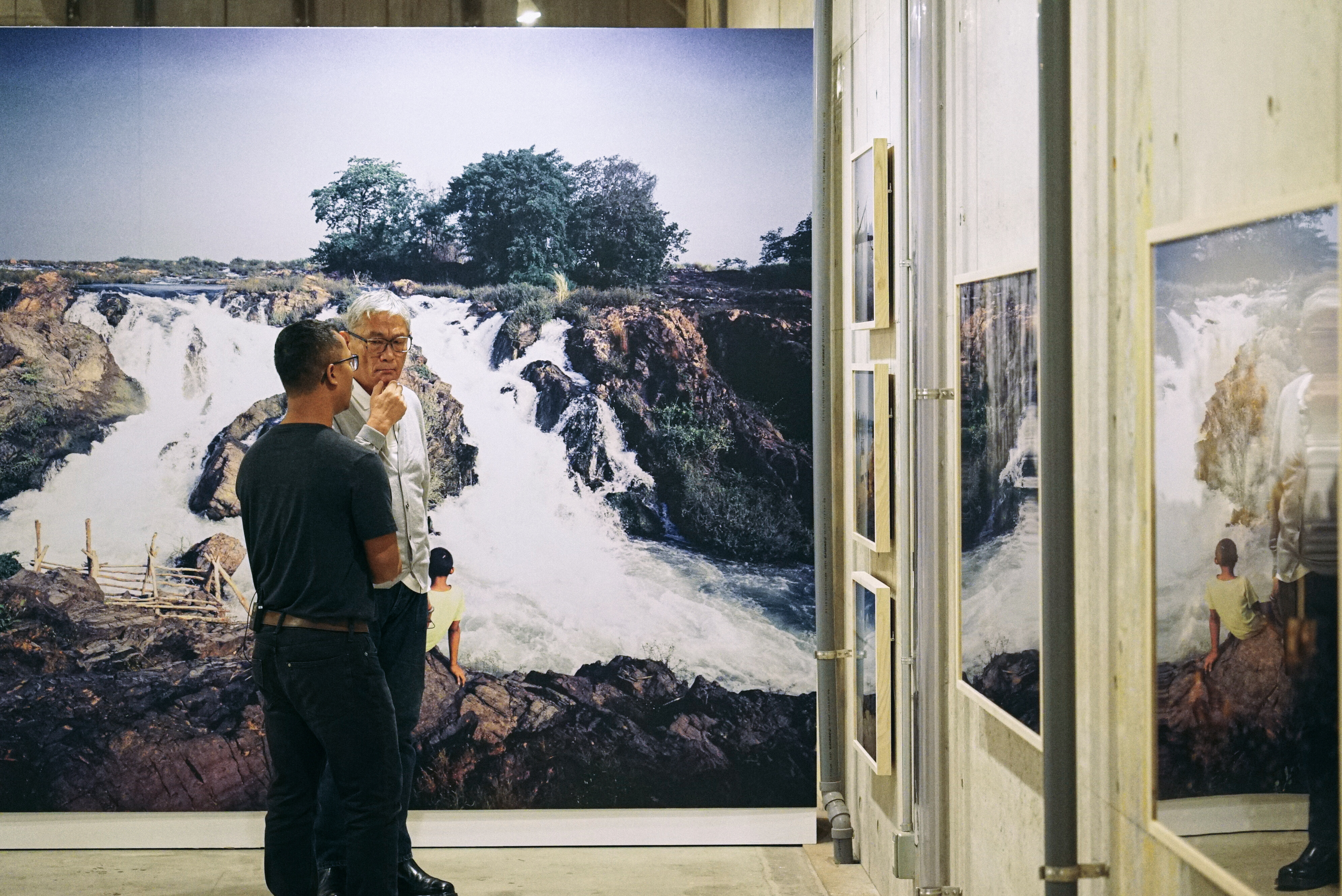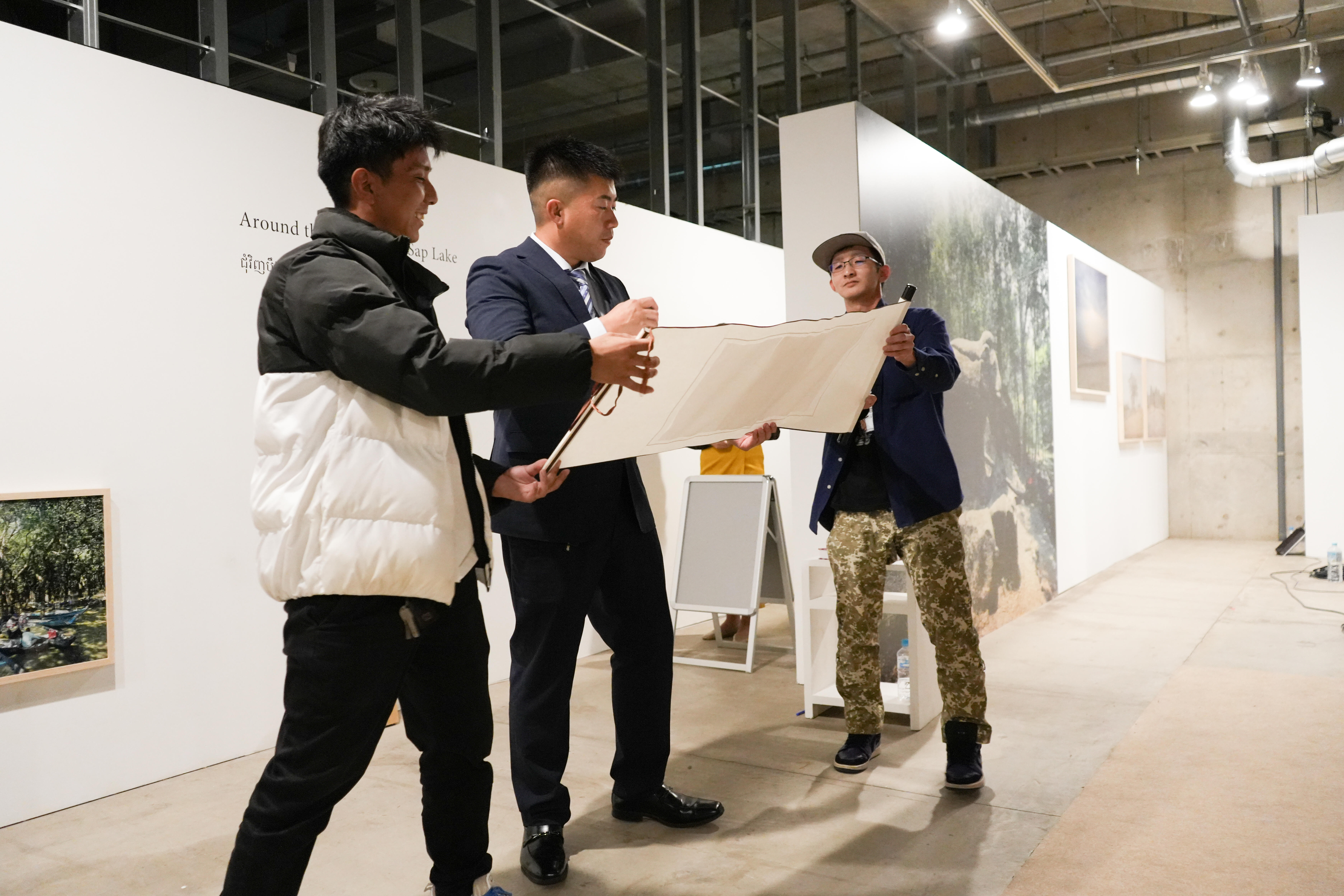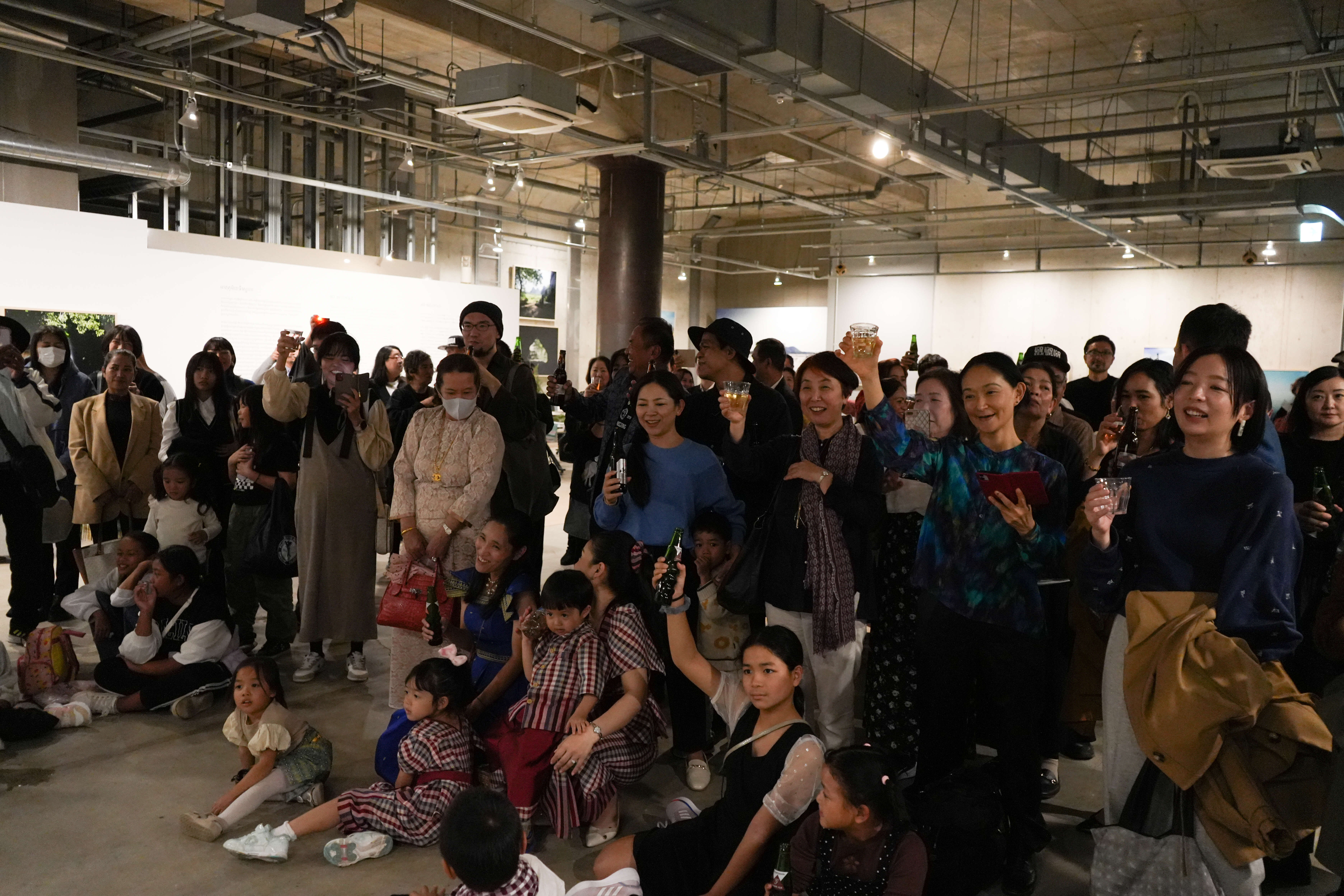
My Beloved by Kim Hak
A photographic project by the Cambodian photographer celebrates the people and landscape of his country.
November 2024 - 2024-11-13
Yokohama Japan
My Beloved by Kim Hak
A photographic project by the Cambodian photographer celebrates the people and landscape of his country.
November 2024 - 2024-11-13
Yokohama Japan
Rei Foundation is pleased to support My Beloved, a photographic project by our long-term partner, the Cambodian artist Kim Hak. Representing ten years’ of picture-making, the body of work was shown at BankART Station in Yokohama, Japan, in November 2024 and published in a book of the same name.
Born in Battambang two years after the fall of the Khmer Rouge regime, Kim Hak grew up hearing his parent’s memories from that time. Now, he uses his art practice to remember, reclaim and reinterpret Cambodian social history from before, during and after the Khmer Rouge era. Rei Foundation has supported his Alive project in which the artist engages with Cambodian diasporic communities that include people displaced by the war, for example in Aotearoa and Japan, providing the opportunity for survivors to share their experiences as a way of supporting collective healing.
While much of Kim Hak’s work has explored the immense human impact of the Khmer Rouge, he is hopeful that through My Beloved he can celebrate and share what is beautiful about Cambodia, not just its painful periods.
“I want to end the cycle of negative images of Cambodia being passed on from the generation that experienced the war to the next. Cambodia is more than the mysteries of Angkor Wat and the tragic history of the Khmer Rouge. My Beloved is my response to these preconceptions.”
Kim Hak spent several years working in the travel industry and later in an archaeology team at Angkor Wat. This experience of Cambodia’s geography and social history inspired him to address his homeland as a conceptual artist and photographer.
In 2012, he set off on a journey to observe the landscapes of Cambodia, camera in hand. He went along the banks of the Mekong River, to Tonle Sap Lake, and further on to the southern coastline. For the following ten years, the project continued intermittently, evolving into an extended travel album of sorts. My Beloved is the outcome, an exhibition and book of 56 photographs that highlight the richness and diversity of Cambodia’s landscapes.
When Kim Hak began, his focus was on the country’s natural beauty, but over the course of the decade he witnessed – and recorded – the rapid transformation of Cambodia's landscape. My Beloved, then is a document of the country during a specific bracket of time, mid-construction boom.
“Waves of urbanisation have transformed whole areas, and places that once existed disappeared or their appearance changed dramatically.”
Further to sharing his layered personal experience of Cambodia with new audiences, Kim Hak also hoped for this project to instil a sense of pride and possibility in his younger compatriots and for Cambodian diasporic communities, encouraging them to expand their understanding of Cambodia beyond the limits of its brutal recent history and of ancient historical tropes. Many of the photographs were taken in the early morning hours. Kim Hak explains, “for me, the dawn symbolises the beginning of a new era for Cambodia.”
The exhibition, curated by Hayashi Takuma and produced by Yutaka Endo, included a sound installation by sound designerrenowned musician Masato Hatanaka. Hatanaka, supported by Takafumi Tamura, spent time at some of the locations photographed by Kim Hak, making audio recordings and then editing them together. The result is an immersive, multi-sensory experience, giving the audience members a rich idea of the environments explored in Kim Hak’s project.
Those with Cambodian roots in Japan, led by members of the voluntary organisation Alive, rallied to support the exhibition, with over 150 attending the opening event. Many had immigrated to Japan after living in refugee camps, but some had not met one another since then. Kim Hak’s photographs and books at the event also provided an opportunity for dialogue between different generations who may normally not have many conversation topics or in some cases even language in common, and whose relationships may have faded. Alive group were also instrumental in providing interpreting and coordination for Kim Hak and performers from Cambodia, as well as photography and organisational support on the launch day, leveraging their unique linguistic abilities and cultural awareness as a bridge between the Cambodian and Japanese teams.
At the opening event on 1 November 2024 and again the following day, visitors were treated to a special performance by Khmer dancer Sok Nalys and classical and contemporary musician Ros Sokunthea, both from Cambodia.
The performance was, specifically created for this exhibition and took direct inspiration from Kim Hak’s works. Eentitled Watercourse, aimed to highlight the lives of the people along the Mekong River to the country's southern and southwestern coastal areas, along with the biodiversity of the area. Ros Sokunthea incorporated traditional Khmer musical instruments, including the angkuoch (jaw harp) and pei pok (free-reed aerophone), shifting between slow and graceful classical music with fast movement, a reference to the relentless development of contemporary Cambodia. Similarly, Sok Nalys combined traditional and contemporary dance styles in innovative ways. The artists stated, “We hope to provide national and international audiences with the beauty of Cambodia through the exquisite art of our Khmer ancestors.”

My Beloved books with different types of "Krama" cover design. Photo credit: Hayashi Takuma
The limited edition book, My Beloved, was also launched at the opening event. The publication is unique, having been printed by Japanese art book specialists Live Art Books, and bound by hand by exhibition curator and art director Hayashi Takuma using Khmer krama cloth. The krama were selected by Kim Hak from areas of Cambodia featured in the My Beloved project.

My Beloved, a book by Kim Hak
Publisher: Rei Foundation Limited
Cambodian traditional cloth (krama) cloth cover, B4 oblong, top binding, 256 pages
ISBN: 978-0-473-72779-6
Publication: 2 November 2024
Binding: Takuma Hayashi
Editing: Rei Foundation Limited
Printing: Live Art Books
Please email us if you would like to purchase a copy.
Visit this page: https://kimhak-mybeloved.com/














